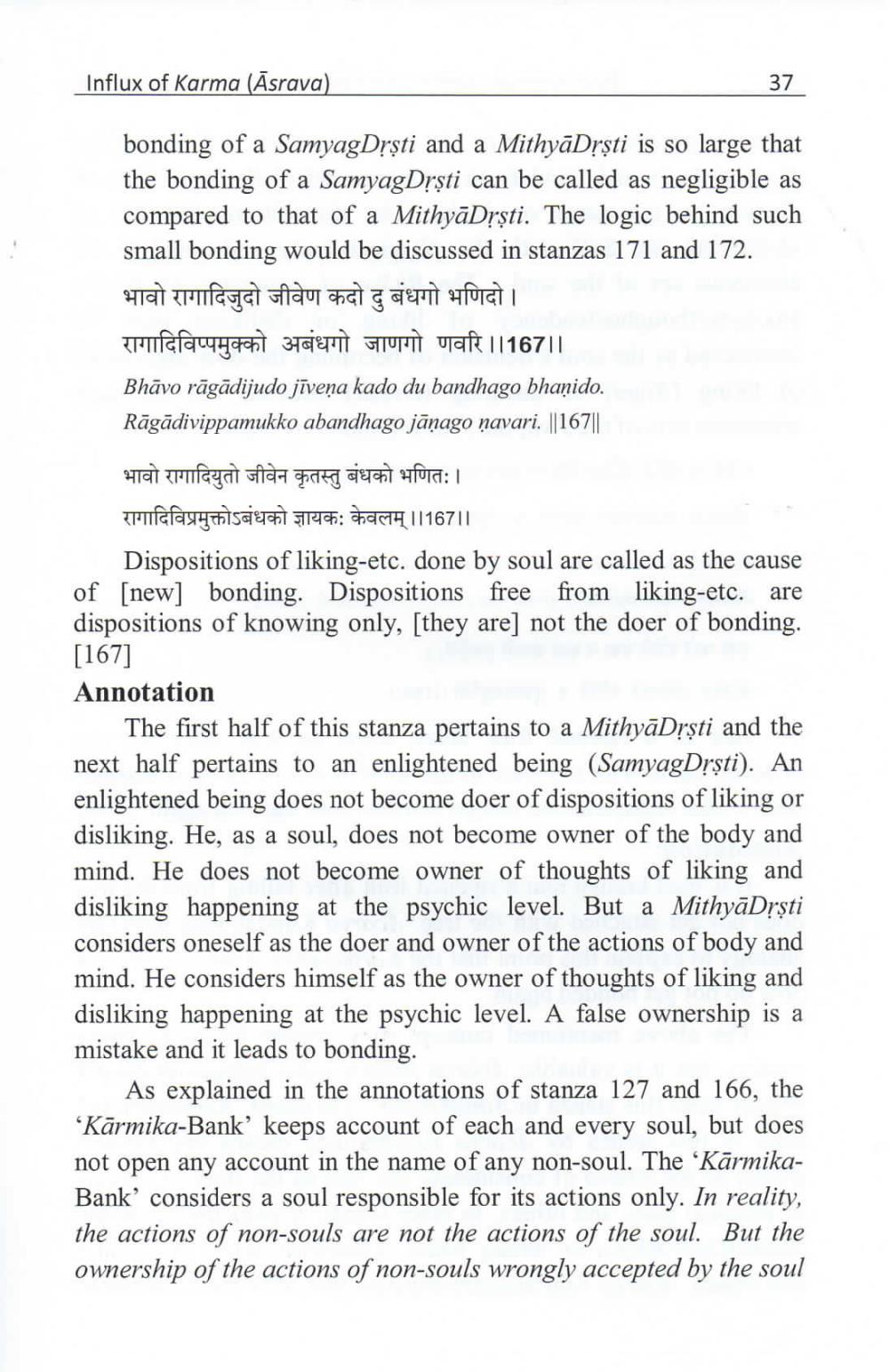________________
Influx of Karma (Asrava)
37
bonding of a SamyagDrști and a MithyāDrști is so large that the bonding of a SamyagDrşti can be called as negligible as compared to that of a MithyāDrşti. The logic behind such small bonding would be discussed in stanzas 171 and 172. भावो रागादिजुदो जीवेण कदो दु बंधगो भणिदो। rufafanucchi 3GEM GUT Uaf 11167||| Bhāvo rāgādijudo jīveņa kado du bandhago bhanido. Rāgādivippamukko abandhago jāņago ņavari. ||167|| भावो रागादियुतो जीवेन कृतस्तु बंधको भणितः ।
rufafanythsalah 51214: Sam4 11167|||
Dispositions of liking-etc. done by soul are called as the cause of [new] bonding. Dispositions free from liking-etc. are dispositions of knowing only, [they are] not the doer of bonding. [167] Annotation
The first half of this stanza pertains to a MithyāDrşti and the next half pertains to an enlightened being (SamyagDrști). An enlightened being does not become doer of dispositions of liking or disliking. He, as a soul, does not become owner of the body and mind. He does not become owner of thoughts of liking and disliking happening at the psychic level. But a MithyāDrști considers oneself as the doer and owner of the actions of body and mind. He considers himself as the owner of thoughts of liking and disliking happening at the psychic level. A false ownership is a mistake and it leads to bonding.
As explained in the annotations of stanza 127 and 166, the ‘Kārmika-Bank' keeps account of each and every soul, but does not open any account in the name of any non-soul. The 'KārmikaBank' considers a soul responsible for its actions only. In reality, the actions of non-souls are not the actions of the soul. But the ownership of the actions of non-souls wrongly accepted by the soul




